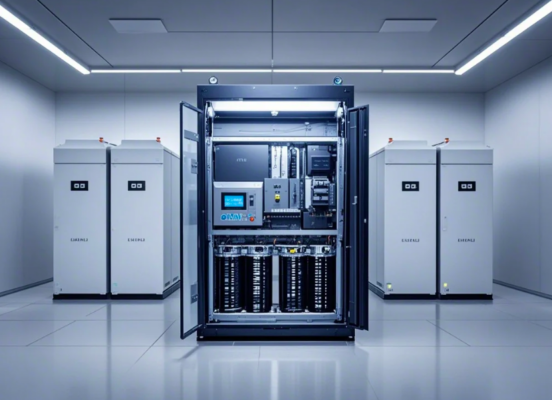Table of Contents
ToggleIn recent years, Energy Storage Systems (ESS) have become a critical component in the energy sector, offering a reliable solution for managing and optimizing power usage. These systems are designed to store excess energy and provide it when demand is higher or when renewable energy sources, like solar or wind, are unavailable. But what exactly is ESS, and how does it work? In this article, we will break down the fundamentals of ESS and its operational mechanics.

Understanding ESS (Energy Storage System)
An Energy Storage System (ESS) refers to a technology or a set of technologies that allow the capture and storage of energy for later use. The most common type of ESS involves the use of batteries, though other forms like thermal storage and pumped hydro storage also exist. ESS helps improve energy efficiency by storing surplus energy during periods of low demand and discharging it when the demand rises. This process not only ensures a steady supply of electricity but also contributes to grid stability, especially in regions with fluctuating renewable energy outputs.
Components of ESS
A typical ESS consists of several key components:
- Storage Medium: The most common storage media include lithium-ion batteries, lead-acid batteries, or even newer technologies like solid-state batteries. The type of storage medium impacts the efficiency, cost, and capacity of the system.
- Power Conversion System (PCS): This component is responsible for converting stored DC (direct current) power into AC (alternating current) power, which can be used in homes or businesses.
- Battery Management System (BMS): The BMS monitors and manages the charge and discharge cycles of the battery, ensuring that the ESS operates efficiently and safely.
- Inverter: An inverter is used to convert the stored electrical energy into a form that can be utilized by the electrical grid or specific devices.
How Does ESS Work?
At its core, an ESS works by charging the energy storage medium during times of excess energy supply and discharging it when energy demand increases. For instance, when there is a surplus of electricity produced by renewable energy sources, such as solar or wind, this energy is stored in the system. The ESS stores this energy for use later, helping reduce dependency on fossil fuels during peak consumption times.
Here is a simple example: During the daytime, solar panels may produce more electricity than a household or business requires. The excess energy is then stored in an ESS. Later, when the sun sets and the energy demand remains high, the stored energy can be used to power the property, reducing the need to rely on grid electricity.
Benefits of ESS
- Improved Grid Stability: ESScan helps stabilize the grid by storing and discharging energy at appropriate times. This balance is crucial when integrating intermittent energy sources like solar and wind into the grid.
- Cost Savings: By using stored energy during peak pricing hours, consumers can reduce their electricity bills, especially in areas with time-of-use rates.
- Environmental Impact: With the rise of renewable energy, ESS plays an essential role in enabling cleaner energy consumption. By optimizing the use of renewable sources, these systems help reduce reliance on fossil fuels.
- Backup Power: In case of a power outage, ESS can provide an immediate backup, ensuring that critical appliances and devices continue to operate.
Conclusion
Energy Storage Systems (ESS) are transforming the way we manage and use electricity. These systems provide a reliable, sustainable, and efficient solution to power storage, making them indispensable for the future of energy. Whether for residential use, commercial applications, or large-scale grid management, ESS offers significant benefits that extend beyond just energy storage. Understanding how these systems work and their advantages will help businesses and individuals make informed decisions about incorporating ESS into their energy management strategies.
0

